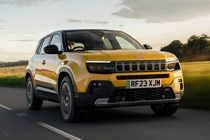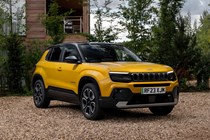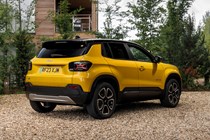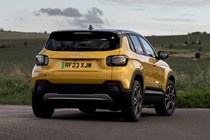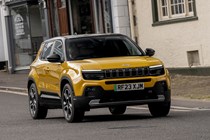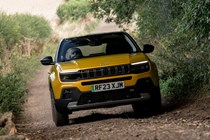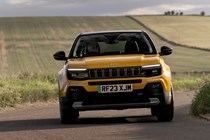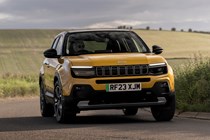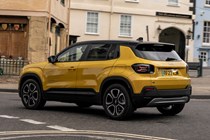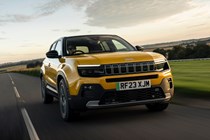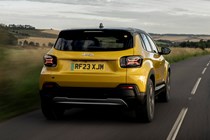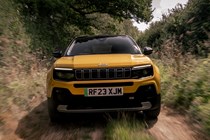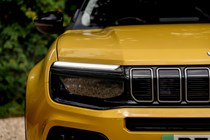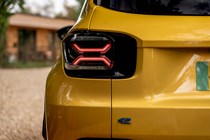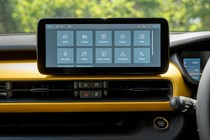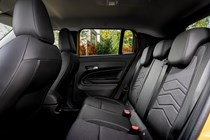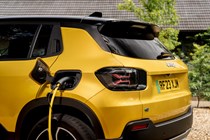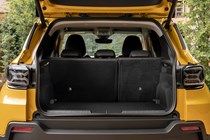Jeep Avenger EV interior, tech and comfort
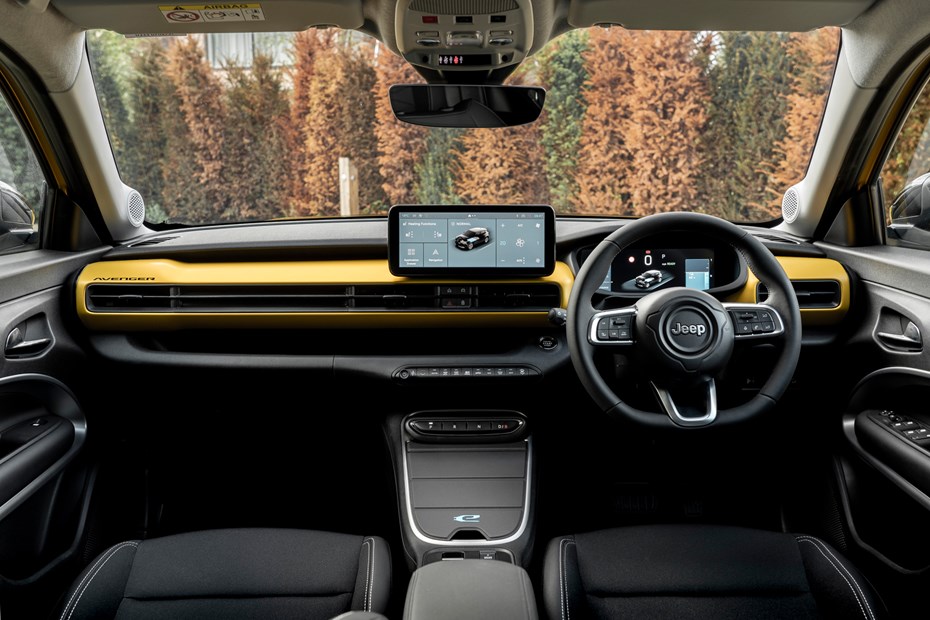
- Good build quality overall
- But some corners have been cut
- Driving position is a little strange
How is the quality and layout?
About average for the class which, if you haven’t already guessed, is the running theme for the Jeep Avenger. The dashboard, steering wheel and leather flap for the central storage bin all feel quite high quality, but the push-button gear selector feels a little cheap, as do the climate controls. Still, we appreciate the temperature controls aren’t buried in a hidden submenu on the touchscreen.
We don’t like to complain too much about the quality of interior plastics but, in a car that costs as much as £40,000, we’d expect to see a few more soft-touch materials and sturdier trims. The drive mode and parking brake switches on the centre console are pretty poor, too.
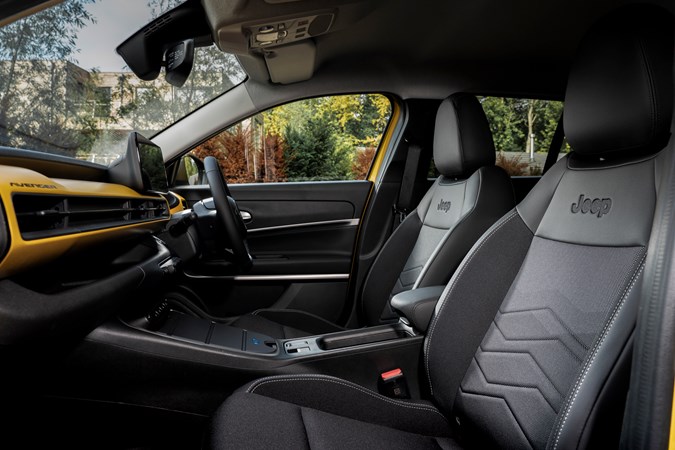
Jeep very obviously pilfered both buttons from the Peugeot/Citroen parts bin, but it didn’t even feign an effort to integrate them into the Avenger’s cabin design. The firm’s engineers just plonked them on the Avenger’s centre console – and they stick out like a mucky dock worker in Waitrose.
The layout is quite democratic, though. The infotainment system is mounted high on the dashboard, within your sightline and, because it’s parallel with the scuttle, everyone in the cabin can see it. That works well for a car like this. As we’ll soon explain, the Avenger isn’t a focused driving machine, so socialising with your passengers (and, say, sharing music on the touchscreen) is important.
Infotainment and technology
Every version of the Avenger is fitted with the same 10.25-inch infotainment system. There are two different digital gauge clusters depending on spec, though. The most basic car comes with a 7.0-inch screen, while Altitude models and up feature another 10.25-inch unit.
Surprise surprise, the Avenger’s screens are decidedly average. The Smart #1 has far sharper resolution and much faster load times, while the Kia Niro EV’s 10.25-inch setup has a more logical menu design. At least you get Apple CarPlay and Android Auto as standard – handy, because you need to pay extra for Jeep’s built-in sat-nav system.
We like the simplicity of the digital gauge cluster, though. The graphics are a little blocky, but the screen is easy to read, even in bright sunlight. We also like the shortcut buttons for the infotainment system. We’re particularly fond of the button that takes you to the Jeep’s driver assistance tech. It means you can disengage the car’s irritating lane assist system with just two prods.
Comfort
- Reasonably supportive front seats
- Limited steering wheel adjustment
- Lack of lumbar support
The Avenger’s front seats are reasonably comfortable. There’s plenty of cushioning in the seat squabs and the seat backs offer just enough lateral support to hold you in place through faster corners. It’s a shame you don’t get a lumbar support function, though. Our tester’s back was starting the feel the strain after a full day at the wheel. They’re more than fine for short hops, though, which is the exact scenario in which the car will most commonly be used.
Our tester didn’t gel with the Avenger’s driving position, either – but that’s his fault for being so lanky. But it’s still worth noting that the steering wheel doesn’t telescope out of the dashboard far enough for drivers over six feet tall. If you’re a similar size and you set the Avenger’s seat at a comfortable position for your legs, you’ll find yourself over-reaching for the wheel. This problem is shared across all e-CMP2-based electric SUVs, including the Vauxhall Mokka Electric and Fiat 600e.


